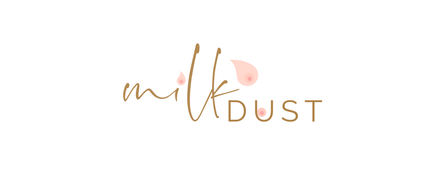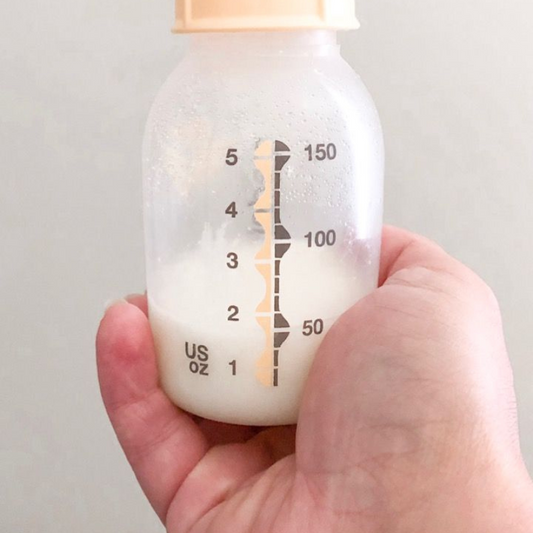Andrea Tran RN, BSN, MA, IBCLC
There are a variety of things that can cause breast pain when you are a breastfeeding mother. One nursing problem that results in breast pain is a clogged duct. This condition is sometimes referred to as a plugged milk duct. It results when milk flow is disrupted for some reason in an area of the breast.
A clogged milk duct can lead to an infection, so it is really important to catch it early, and hopefully clear it out before it results in a round of antibiotics.
What does a clogged milk duct look and feel like?
A clogged duct will result in a hard lump in your breast. The size of the lump can vary from pea- sized to considerably larger. It is usually tender, and often the skin is reddened where the lump is. It may feel warm. It is sometimes accompanied by a white spot on the nipple called a milk blister or bleb. Some moms also notice some additional heat in one side, where the breast seems warm. This is one of the earlier signs that may help you catch the clogged duct before it results in an infection. One study reported that 4-5% of breastfeeding mothers experience a clogged duct at some point during breastfeeding. If you find yourself in this unlucky group, you can usually get rid of the clogged duct on your own.
How to treat a clogged Milk Duct:
If you feel a hardened area in your breast, try massaging that area at your next feeding or pumping.
Get behind the lump and massage in the direction of your nipple. Using a special lactation massager or even the end of an electric toothbrush can help get rid of the lump. The massaging motion can help dislodge the lump, so it can pass through.
When you latch your baby, try to position him so that his chin is pointed in the direction of the lump.
Your baby’s chin will massage that area of the breast help it drain more thoroughly. If these simple measures are not effective, the next thing to try is to apply some moist heat to the clogged area about 20 minutes before the next feeding. A trick that moms use is to put warm water into a clean disposable diaper and apply that to the affected area. Make sure that you don’t make it too hot. You don’t want to cause a burn.
Alternatively, you can just wet a washcloth with warm water and castor oil and cover it with some plastic wrap to keep in the heat.
If you can’t get your water warm enough, you can put the wet washcloth in the microwave for a few seconds. Again, don’t let it get too hot! Doing a warm compress with castor oil has also been useful for many mothers suffering from a clogged duct. When you feed after applying the moist heat, again position your baby with his chin in the direction of the clog. Continue massaging the area throughout the feeding. You can also employ these measures if you use a breast pump.
Try massaging the lump in the shower while expressing milk.
This is a trick that usually works well. By standing in the steam and heat of the shower, you can massage and express the milk without worrying about it leaking all over. The hot shower beating down on the area can also feel really good, and be very effective when combined with a manual massage. Try taking a shower in the morning and evening, in addition to the other tips to really get that clogged duct to move.
It may take more than one session of applying the warm packs, massaging and showering to resolve a clogged duct. Don’t get discouraged if it doesn’t go away entirely right away, just keep at it to avoid any infections.
Why am I getting a clogged milk duct?
The most common causes of a clogged duct is something that prevents the milk from flowing freely. Tight clothing and carriers are on the list, among a few other things that can affect how your milk flows. Overall, it is really hard to say what specifically is causing a clogged duct, but here is a small list of items you can control:
- Poorly fitting bras
- Backpack straps
- Baby carriers
- Purse straps
- Seat belts
Some mothers find that if they sleep on their side, that can cause an episode of a clogged duct. Mothers with abundant milk supplies tend to get clogged ducts more often. This includes mothers of twins or triplets as well as those moms who just produce a lot of milk.
Most often, mothers with an oversupply experience clogged milk ducts.
If you have an oversupply issue and you pump a lot, decreasing pumping can help reduce your supply. If you have gotten used to pumping to keep from getting uncomfortably full, then you should gradually decrease how much milk you pump every couple of days. If a baby has a shallow latch or an ineffective suck, this can result in poor draining and could be
the cause of a clogged duct. Missing feedings can also lead to clogged ducts. This can happen when your baby starts
sleeping longer stretches at night. If you find that you get repeated cases of clogged ducts, you will want to take care not to miss feedings. Keeping a manual pump in your purse when you are out without your baby allows you
to pump some milk off.
Complications of a clogged duct:
If a clogged duct is not resolved, it potentially can turn into a case of mastitis. Mastitis is a breast infection. If you get mastitis in addition to a tender lump that is red, you will also have a fever and flu-like symptoms. Mothers report feeling very sick when they get mastitis. It requires treatment with antibiotics. Call your health care provider if you develop symptoms of mastitis. The key is to treat the infection very quickly, so you can feel better with baby right away.
A healthy diet can help reduce chances of infection.
A healthy diet can actually be super helpful in preventing an infection from happening. Try eliminating sugar and simple carbs, which cause chemical reactions in your body that allow bacteria to feed and grow faster!
Milk Dust is an amazing nutritional supplement low in sugar, and high in antioxidants to help keep your body in a more alkaline state, and hopefully less-likely to get infected!
Milk Dust also has a great 10-day detox program, to help you stock to a healthy diet, that will keep your immune system working strong!
How to prevent clogged milk ducts:
While most moms who get clogged ducts will only experience this breastfeeding problem once, there are some moms for whom it is a recurring problem.
If you suffer from repeated episodes of clogged milk ducts, you should get in the habit of feeling your breasts after feedings to ensure that all areas have drained well. At the next feeding, massage any areas that didn’t drain well. Lecithin is a dietary supplement that some moms take to help prevent recurring plugged ducts. Taking 1200 mg 2-4 times a day has been recommended. Fortunately, most moms will not have to deal with this breastfeeding problem. But if you find that
you do, you now have several ways to deal with it.



